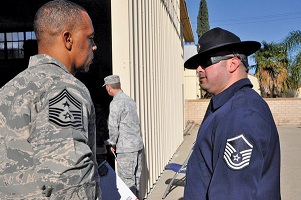The United States Air Force is merging its headquarters staffs to integrate intelligence, surveillance and reconnaissance with cyber effects operations efforts to enable coordinated Title 10 and Title 50 actions across the range of military operations, while elevating chief information officer roles and responsibilities.
In layman’s terms, the Air Force is realigning the staffs and streamlining oversight, policy and guidance functions to create greater integration and effectiveness to be more competitive in the increasingly contested warfighting domains. At the same time, this realignment enables the CIO to better focus on statutory CIO responsibilities.
The current National Defense Strategy is driving the requirements and priorities. Combining the functions of cyber effects operations, warfighter communications and intelligence, surveillance and reconnaissance will break down barriers and enable greater coordination across the range of military operations. The new arrangement establishes a single deputy chief of staff for intelligence, surveillance, reconnaissance and cyber effects operations which will streamline oversight, policy and guidance.
The Senate confirmed the secretary of the Air Force’s nomination of Lt. Gen. VeraLinn Jamieson as the deputy chief of staff for intelligence, surveillance, reconnaissance and cyber effects operations, March 1. The secretary of the Air Force has assigned the duties of the CIO to Matthew Donovan, undersecretary of the Air Force. In keeping with law, the CIO will retain responsibility for the oversight and management of the Air Force’s network infrastructure, governance, standards, interoperability, and cyber security. Concurrently, Bill Marion will retain his duties as deputy chief information officer and will be focused on the day-to-day network operations to enhance the Air Force’s warfighting effects in the cyber domain.








